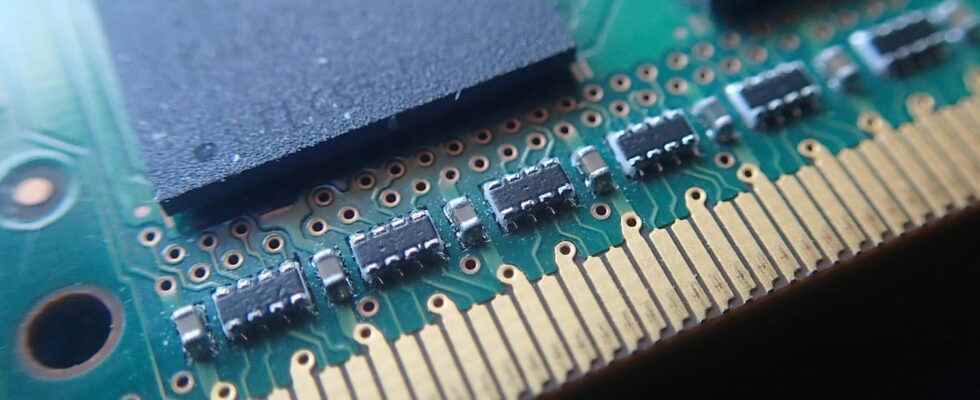DDR3 RAM is likely to become rare with the scheduled shutdown of production by some major manufacturers. Better to buy now to upgrade an old PC, before the prices go up!
Like many other electronic components, memory evolves over time and technological advancements. And as always, one generation drives out the previous one. Thus, DDR3 type Ram – by its full name, DDR3 SDRam – may soon disappear, or at least become rare. And so expensive. According to DigiTimes, two major memory chip majors, Samsung and SK Hynix, are preparing to abandon their latest DDR3 production lines to adapt them to new generations of circuits. Samsung has already announced to its customers that it will stop taking orders from the end of 2022 and SK Hynix seems to be following the same path. Certainly, the Koreans are not the only producers of Ram, and we can count for a while on other Chinese, Taiwanese or even American manufacturers such as Nanya, Winbond, Etron, Elite or Micron.
Samsung’s announcement is not illogical. Appearing in 2007, DDR3 was widely used in computers (PC and Mac) for about ten years before being gradually replaced by DDR4 which offers greater capacities, better performance and lower power consumption. And, with the arrival of new Intel (12th generation called Alder Lake) and AMD (Ryzen 7000 series) processors, DDR5 will begin to become more popular – when its prices are reasonable – to become the next standard on the market. A very natural development.
DDR3: upgrading a PC at a lower cost
Still, it seems prudent to take the lead in the face of this planned disappearance by buying DDR3 modules now. Not to equip new computers, of course, but to upgrade an old model – 10 or 15 years old – at a lower cost, before prices rise. In fact, PCs and Macs from the late 2000s and early 2010s often had 2 or 4 GB of RAM, which was sufficient at the time. But with later versions of Windows, macOS and Linux – especially Windows 10 – it is strongly recommended to have at least 8 GB of Ram to be comfortable. And, on a fixed or portable computer, it is easy to replace or supplement the original bars to increase the RAM. The operation is quick, risk-free and economical since modules in DIMM (for desktop PC) or SO-DIMM (for laptop PC) format are currently available at very low prices by browsing online stores (for example , 5 euros for a DIMM module of 2 GB, or 20 euros for four modules and a total of 8 GB).





